Why Choosing the Right Hair Removal Cream Matters
Did you know that nearly 40% of women and almost 30% of men use hair removal creams regularly? Whether it’s for occasional touch-ups or a routine beautifying process, the right hair removal cream can make all the difference. Choosing one that’s suited to your skin type isn’t just a matter of convenience; it affects your skin’s health and comfort.
Using a cream that doesn’t match your unique skin needs can lead to unwanted irritation, rashes, or uneven results. The last thing you want is a painful experience when you’re aiming for silky smooth skin!
In this guide, you’ll discover how tailoring your choice of hair removal cream can lead to a smoother, more comfortable experience. From understanding how these creams work to identifying the ingredients that suit your skin, we’ve got you covered! Ready to dive in? Let’s find the perfect match for your skin type!
Understanding Hair Removal Cream: What It Is and How It Works
Hair removal creams, often referred to as depilatories, provide a quick and painless solution for getting rid of unwanted hair. But how do these creams work? Let’s break it down.
The Science Behind Hair Dissolution
At the heart of hair removal creams are active ingredients known as calcium thioglycolate and potassium thioglycolate. These compounds are powerful enough to break down the protein structure of hair, making it incredibly easy for the cream to dissolve those pesky strands right at the skin’s surface. When applied, the cream penetrates the hair shaft and essentially weakens it, so all you have to do is wipe it away after a few minutes.
Imagine you have a thick piece of cheese—applying the cream is like pouring a warm sauce over it. Just like the sauce melts the cheese, the ingredients in hair removal cream weaken the hair, allowing it to be effortlessly wiped off.
How to Use Hair Removal Creams
Using hair removal creams is typically a straightforward process. Here’s a quick rundown:
- Patch Test: Always start by performing a patch test on a small area of your skin to rule out any allergic reactions.
- Application: Apply the cream generously over the area where you want to remove hair, making sure to cover the hair completely. Most brands recommend applying a thick layer.
- Timing: Follow the instructions carefully regarding timing. Leaving it on too long can cause irritation, while not enough time may result in ineffective hair removal.
- Removal: After the recommended duration, use a damp cloth or sponge to gently wipe away the cream along with the dissolved hair. Rinse thoroughly with water to remove any residue.
Practical Tips
- Scent and Sensitivity: Some hair removal creams come with added fragrances to mask the typical chemical scent. If you have sensitive skin, choose unscented or hypoallergenic options.
- Moisturize: After using a hair removal cream, it’s a good idea to follow up with a soothing moisturizer to reduce any potential dryness or irritation.
A Quick Example
For a first-time user, brands like Nair and Veet offer a wide range of products tailored for different skin types and hair thicknesses. For example, if you have sensitive skin, Veet’s Sensitive Formula is specifically designed to minimize irritation and discomfort.
Now that you’ve got a solid understanding of what hair removal creams are and how they function, the next crucial step is to identify your skin type—this will guide you in choosing the right cream to suit your unique needs. Let’s delve into that!
Identifying Your Skin Type: The Key to Choosing the Right Cream
Understanding your skin type is essential when selecting a hair removal cream. Different skin types react uniquely to formulations, and using the wrong one can lead to irritation, redness, or even allergic reactions. So, how do you determine your skin type? Let’s break it down!
Common Skin Types
-
Oily Skin
- Characterized by a shiny appearance, particularly in the T-zone (forehead, nose, chin).
- Prone to acne and enlarged pores.
- If this sounds like you, look for hair removal creams labeled as “oil-free” or “non-comedogenic” (won’t clog your pores).
-
Dry Skin
- May feel rough or flaky, and can be tight or itchy, especially after cleansing.
- Often appears dull or lacks elasticity.
- Opt for creams that contain moisturizing agents like aloe vera or shea butter to help hydrate while removing hair.
-
Sensitive Skin
- Easily irritated or prone to redness and reactions from various products.
- If your skin stings or burns after typical beauty routines, this is probably your skin type.
- Choose creams specifically formulated for sensitive skin, often marked as hypoallergenic or dermatologically tested.
-
Combination Skin
- Displays characteristics of both oily and dry skin. The T-zone may be oily, while other areas can feel parched.
- You may need to try different products or localize application depending on the specific area.
- A balanced cream that hydrates without adding extra oil tends to work best.
Testing Your Skin Type
To discover your skin type, perform a simple test:
- Start with a clean face. Wash it with a gentle cleanser and pat dry.
- Leave your skin bare (no makeup or moisturizer) for about an hour.
- Observe how your skin feels. Is it tight, shiny, or comfortable?
To help solidify your results, consider the Tissue Test:
- After an hour, gently press a tissue against your skin.
- Inspect the tissue:
- Oily skin will leave behind residue.
- Dry skin will have no marks.
- If the tissue shows a little shine in the T-zone but is clean elsewhere, it indicates combination skin.
Why It Matters
Recognizing your skin type helps you avoid products that can aggravate your skin and ensures you’re selecting a hair removal cream that enhances your beauty routine rather than detracts from it. For instance, if you have sensitive skin and carelessly choose a cream formulated for oily skin, you might end up with a burning sensation or rashes.
Once you’ve confidently identified your skin type, you’re ready to find the right ingredients that will work harmoniously with your skin. Next, let’s explore what components to look for in a high-quality hair removal cream!
Ingredients to Look For: What Makes a Good Hair Removal Cream
When it comes to selecting a hair removal cream, understanding the key ingredients is essential. Not only do they determine the effectiveness of the product, but they also impact how your skin reacts to the application. Here are some ingredients to seek out—and what to avoid—to ensure a smooth, irritation-free experience.
Active Ingredients
-
Calcium Thioglycolate and Potassium Thioglycolate:
- These compounds are the backbone of most hair removal creams, effectively breaking down the protein structure of hair. They allow for painless dissolution, making them reliable choices.
-
Sodium Hydroxide:
- Often included to adjust pH, sodium hydroxide can boost the product’s efficacy. However, high concentrations may irritate sensitive skin, so look for products with a balanced formulation.
-
Aloe Vera and Chamomile:
- These natural ingredients are excellent for soothing and moisturizing the skin. If you have sensitive skin, creams that include aloe or chamomile can help reduce irritation and redness after use.
-
Shea Butter and Cocoa Butter:
- Known for their deeply moisturizing properties, these butters can provide hydration and leave your skin feeling soft post-application. Ideal for those dealing with dry skin, they help mitigate any harsh effects from the depilatory process.
Fragrance and Sensitivity
- Unscented Formulas: Some users may find fragrances irritating, especially if they have sensitive skin. Look for creams labeled “fragrance-free” or “hypoallergenic.”
- Natural Extracts vs. Synthetic Fragrance: If you’re concerned about irritation, opt for products with natural extracts instead of synthetic fragrances. For example, creams that list botanical extracts like lavender or rosemary are often gentler on the skin.
Ingredients to Avoid
-
Alkalis and Strong Acids: Ingredients like Ammonium Thioglycolate can be effective, but they often come with a higher risk of skin irritation. If you have sensitive or dry skin, it’s best to steer clear.
-
Parabens and Sulfates: These preservatives and surfactants can irritate delicate skin, contributing to redness or breakouts. Choosing paraben-free and sulfate-free options can help improve your overall experience.
Product Examples
Brands like Nair and Veet are well known for their hair removal creams, offering various formulations that cater to different skin types. For instance:
- Veet Gel Cream: Contains aloe vera for soothing properties—great for sensitive skin.
- Nair’s Sugar Wax: Another option that includes natural ingredients, appealing to those wanting a hair removal experience with fewer harsh chemicals.
By focusing on these ingredients, you can select a hair removal cream that works well with your skin type and minimizes the chances of irritation. Understanding what goes into these formulas is crucial for a successful hair removal experience.
Feeling empowered with this knowledge? Perfect! Now that you’re equipped to choose wisely based on ingredients, the next step involves best practices for using hair removal creams safely. Let’s move forward into that critical territory!
Best Practices for Using Hair Removal Creams Safely
Using hair removal creams can be quick and effective, but following best practices is essential to ensure your experience is both safe and pleasant. Here’s a guide to help you apply hair removal cream confidently and minimize the risk of irritation.
Start with a Patch Test
Before you jump in and apply hair removal cream to a larger area, it’s crucial to perform a patch test. This simple step helps you check for any allergic reactions or sensitivities. Here’s how to do it:
- Apply a Small Amount: Choose a small area of skin on your arm or leg and apply a thin layer of the cream.
- Wait: Leave the cream on for the time specified in the instructions, usually about 5-10 minutes.
- Observe: After removing, monitor for any redness, itching, or irritation over the next 24 hours. If you experience no adverse effects, you’re good to go!
Application Techniques
When you’re ready for a more extensive application, keep these tips in mind:
- Thick Coverage: Always apply a generous layer of cream to ensure that all hair is covered. A thin application may not effectively dissolve the hair.
- Use a Plastic Spatula: Many hair removal cream kits include a spatula or similar tool. This helps you spread the cream evenly and allows for more precise application. If yours doesn’t, consider using a clean, flat tool to avoid using your hands directly, which can lead to messy applications.
- Follow Timing Guidelines: The recommended application time will vary depending on the product. Always adhere to these instructions to avoid skin irritation. If unsure, set a timer to keep track.
Aftercare Considerations
How you care for your skin post-application can make a significant difference in your overall experience:
- Rinse Thoroughly: After removal, rinse your skin with warm water to eliminate any residue and soothe the area.
- Moisturize: Your skin can feel dry after using hair removal cream. Use a gentle, fragrance-free moisturizer to hydrate and calm the skin. Look for products with soothing ingredients, like aloe vera or cucumber extract.
Avoid Common Mistakes
Here are some additional pitfalls to steer clear of when using hair removal creams:
- Don’t Rush the Process: Avoid leaving the product on longer than recommended, as this can lead to chemical burns or irritation.
- Skip the Sun: After use, avoid sun exposure for at least 24 hours. Hair removal can leave the skin sensitive to sunburn, so keep it protected with light clothing and sufficient sunscreen.
A Thought for Future Use
Remember, everyone’s skin reacts differently. If you experience any persistent discomfort or unusual reactions, consult a dermatologist for advice tailored to your needs.
With these best practices in mind, you can approach hair removal cream usage with confidence and ease. Now, let’s take a look at the best options available on the market, specifically tailored to your unique skin type!
Top Recommendations for Hair Removal Creams Based on Skin Types
Now that you understand how to choose the right hair removal cream and the key ingredients to look for, let’s get into the nitty-gritty of product recommendations tailored for different skin types. Here’s a curated list of hair removal creams, highlighting specific products that cater to sensitive skin, oily skin, dry skin, and combination skin.
For Sensitive Skin
If you have sensitive skin, prioritizing gentle formulations is key. Look for creams labeled as hypoallergenic or specifically made for sensitive skin.
-
Veet Gel Cream for Sensitive Skin: This cream contains aloe vera and vitamin E, providing soothing properties while effectively removing hair. Dermatologically tested, it helps minimize irritation, making it an excellent choice for those with easily reactive skin.
-
Nair Hair Remover Cream for Sensitive Skin: This formula is enriched with natural extracts and has a pleasant scent. Its gentle nature reduces the risk of irritation, perfect for delicate areas like the bikini line or underarms.
For Oily Skin
Oily skin types will benefit from hair removal creams that are oil-free and non-comedogenic to prevent clogged pores.
-
Nair Hair Remover Lotion: This removal cream works effectively without leaving oily residues. Prepping your skin with a gentle cleanse before application can enhance results, leaving your skin smooth without excess shine.
-
Veet Spray On Cream: Ideal for those frequently on the go, this water-based spray is easy to apply and contains a lightweight formula that adheres perfectly to oily skin without adding extra moisture.
For Dry Skin
Individuals with dry skin should seek formulations that hydrate and nourish while removing hair.
-
Nair Cocoa Butter Hair Removal Cream: This cream incorporates cocoa butter for its rich moisturizing properties, ensuring your skin stays hydrated and smooth during the hair removal process. It’s a great option if you’re looking to tackle coarse hair while pampering your skin.
-
Veet Men’s Hair Removal Cream: Though marketed for men, the moisturizing elements like shea butter and vitamin E make it suitable for anyone with dry skin. Its thicker consistency ensures thorough coverage and hydration post-use.
For Combination Skin
Those with combination skin may want to focus on a balanced approach, utilizing creams that can address both hydration and shine.
-
Veet Sensitive Precision Hair Removal Cream: This cream is formulated to cater to both dry and oily areas, perfect for combination skin. It also offers a nourishing component with its added aloe vera, helping moisturize drier areas while effectively tackling hair on oilier zones.
-
Nair Sugar Wax: This gel-based formula can be adjusted during application; you can use it thicker on dry parts and thinner on oily areas. Its natural sugar ingredients make it a versatile choice for varied skin textures across your body.
A Quick Recap
- Sensitive Skin: Veet Gel Cream and Nair Sensitive Skin Cream
- Oily Skin: Nair Hair Remover Lotion and Veet Spray On Cream
- Dry Skin: Nair Cocoa Butter Cream and Veet Men’s Hair Removal Cream
- Combination Skin: Veet Sensitive Precision and Nair Sugar Wax
With these recommendations, you can feel empowered to make the right choice for your hair removal needs. Just remember to follow the best practices we discussed earlier to ensure a safe and smooth experience.
Feeling ready to explore your hair removal options? Let’s turn to a few final thoughts on using hair removal creams effectively and keeping your skin in great shape!
Final Thoughts on Hair Removal Creams and Skin Care
As you wrap up your journey toward choosing the best hair removal cream, remember that understanding your skin type is crucial. Your unique skin characteristics can significantly enhance your hair removal experience, reducing the risk of irritation and ensuring optimal results. By selecting a cream tailored to your individual needs, you set the stage for smoother, healthier skin.
Don’t hesitate to experiment with different products, but always prioritize safety. Patch tests, checking ingredient lists, and adhering to best practices will help you find the perfect match. Happy hair removal, and may your skin glow with confidence!


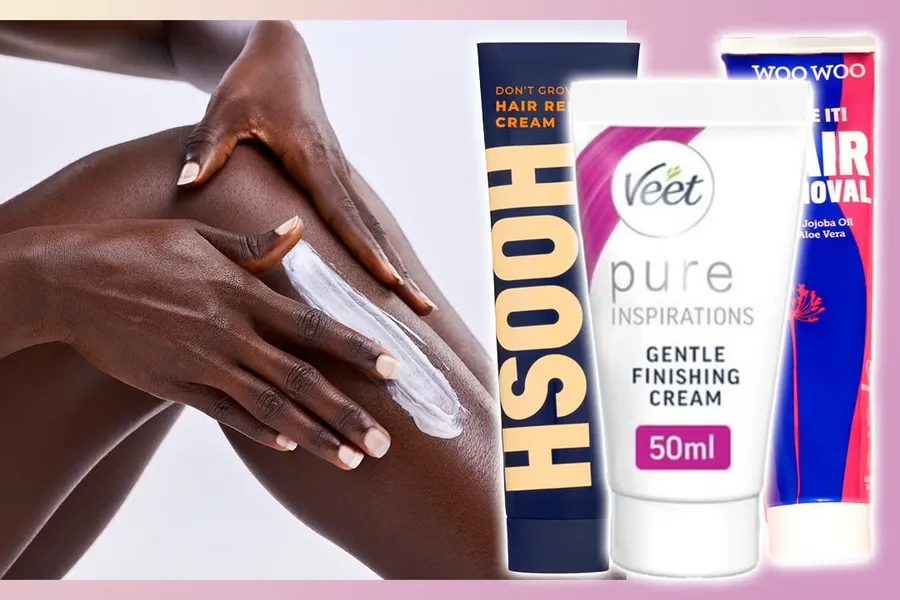
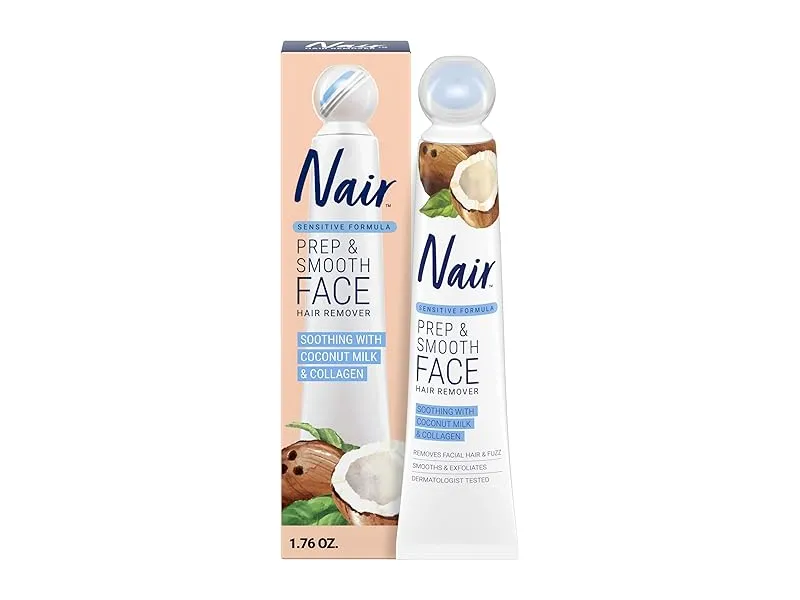
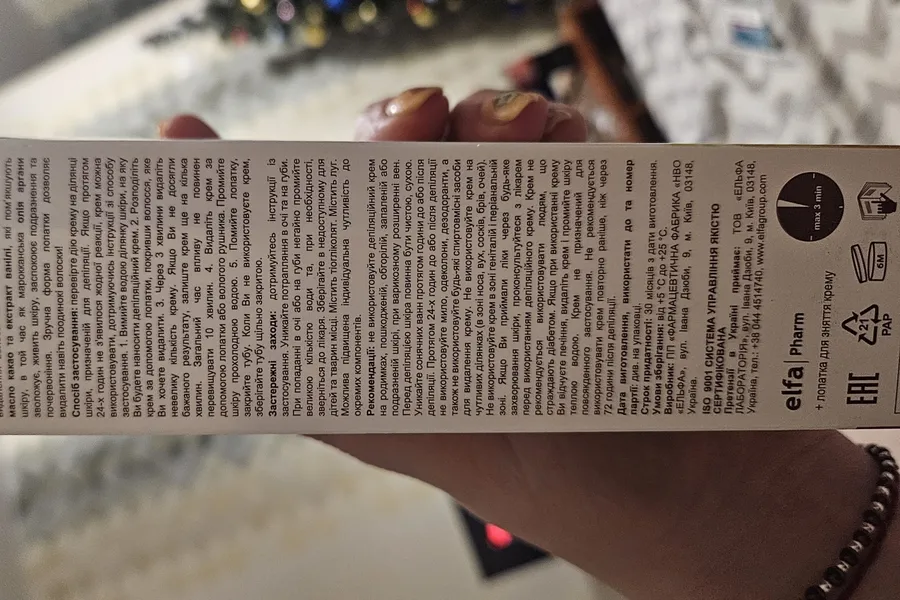

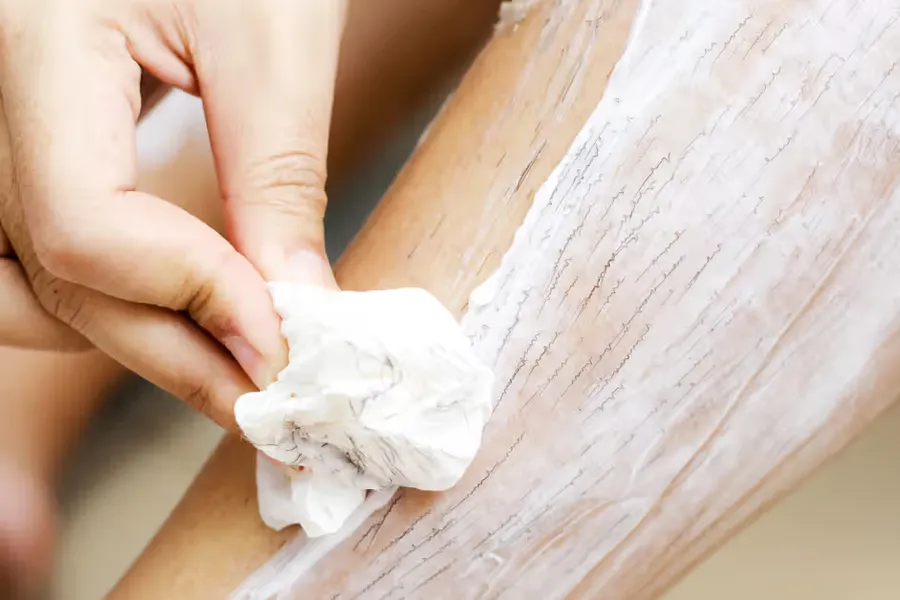
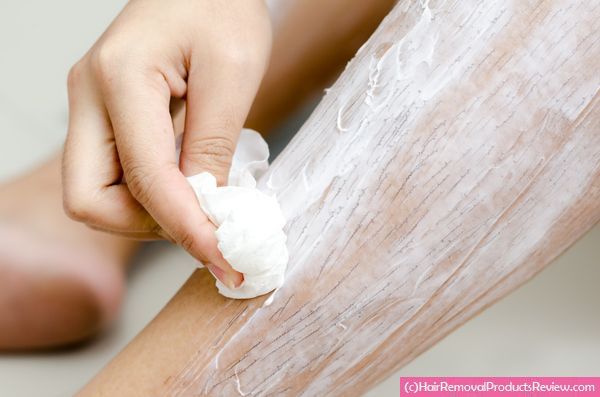
Ugh, reading this makes me actually wanna try hair removal creams. Hair removal is annoying, and I’m tired of shaving every week. How long do the effects last?
Yeah, I’ve found that they last longer than shaving, at least for me. Worth giving it a shot, I think!
Good question, Tommy! Effects can last from a few days to a week, depending on your hair growth cycle.
Lol I didn’t realize hair removal creams were this complex. I thought it was as easy as slathering some cream on! Clearly, I was wrong. What’s a good starting point if you have no clue?
Start by identifying your skin type first, Nina! Then look for creams that specifically mention efficacy for that type.
Same here! I’m learning a lot already. Definitely don’t want a repeat of my last bad experience!
Nice article! I’m skeptical about creams since I had a bad experience with one last summer. Are there safe and reliable brands?
I’ve heard good things about Veet! That might be a good start for you.
There are definitely safe options, Liam! Brands like Veet and Nair have been around for ages, just make sure it’s for your skin type.